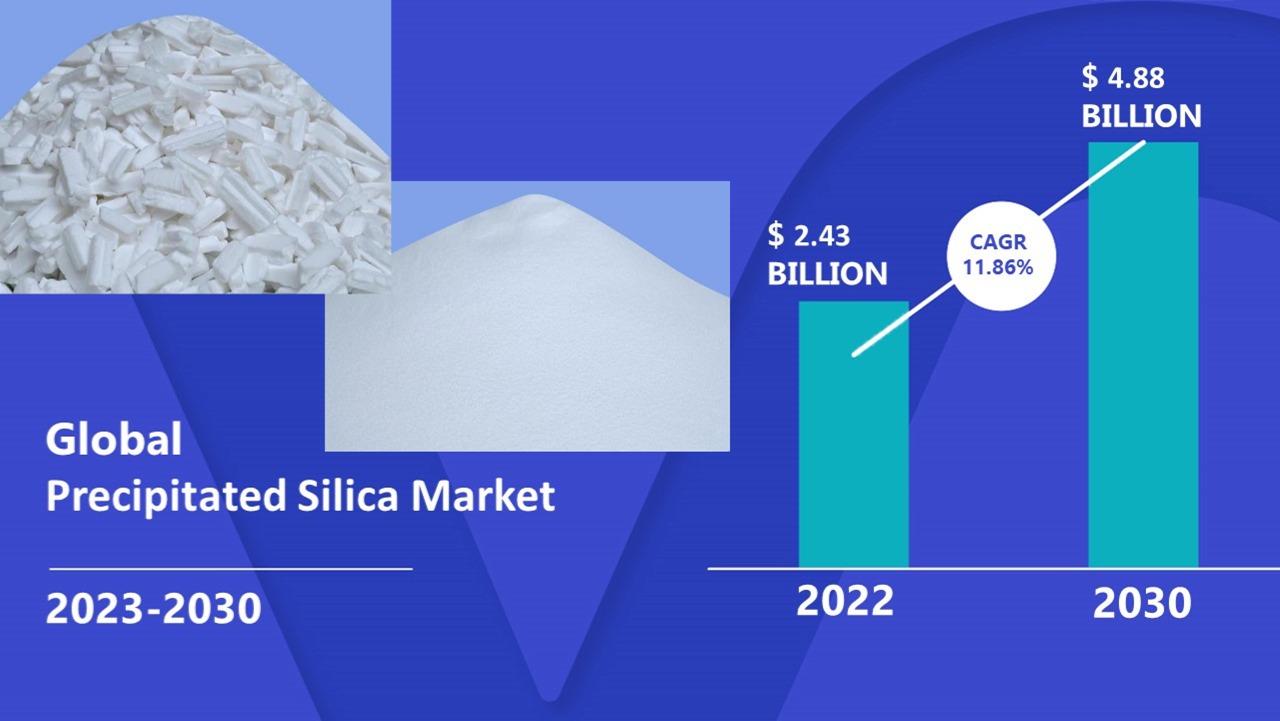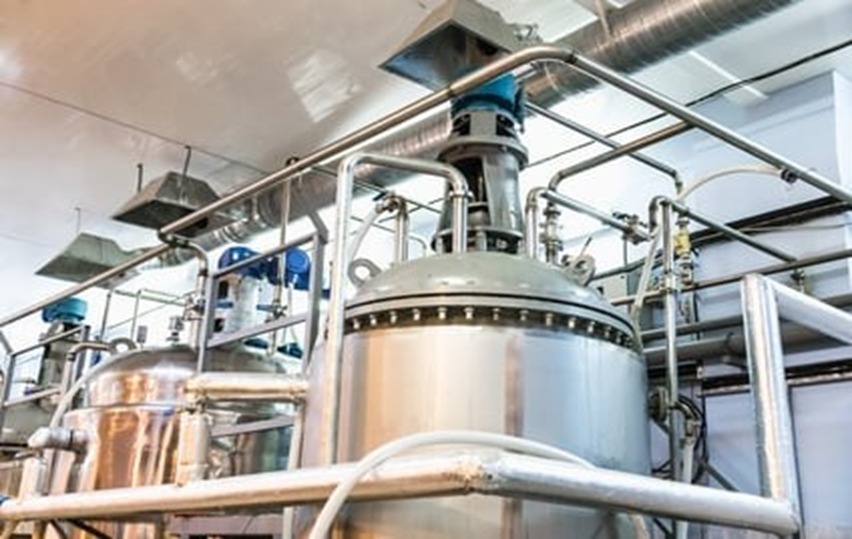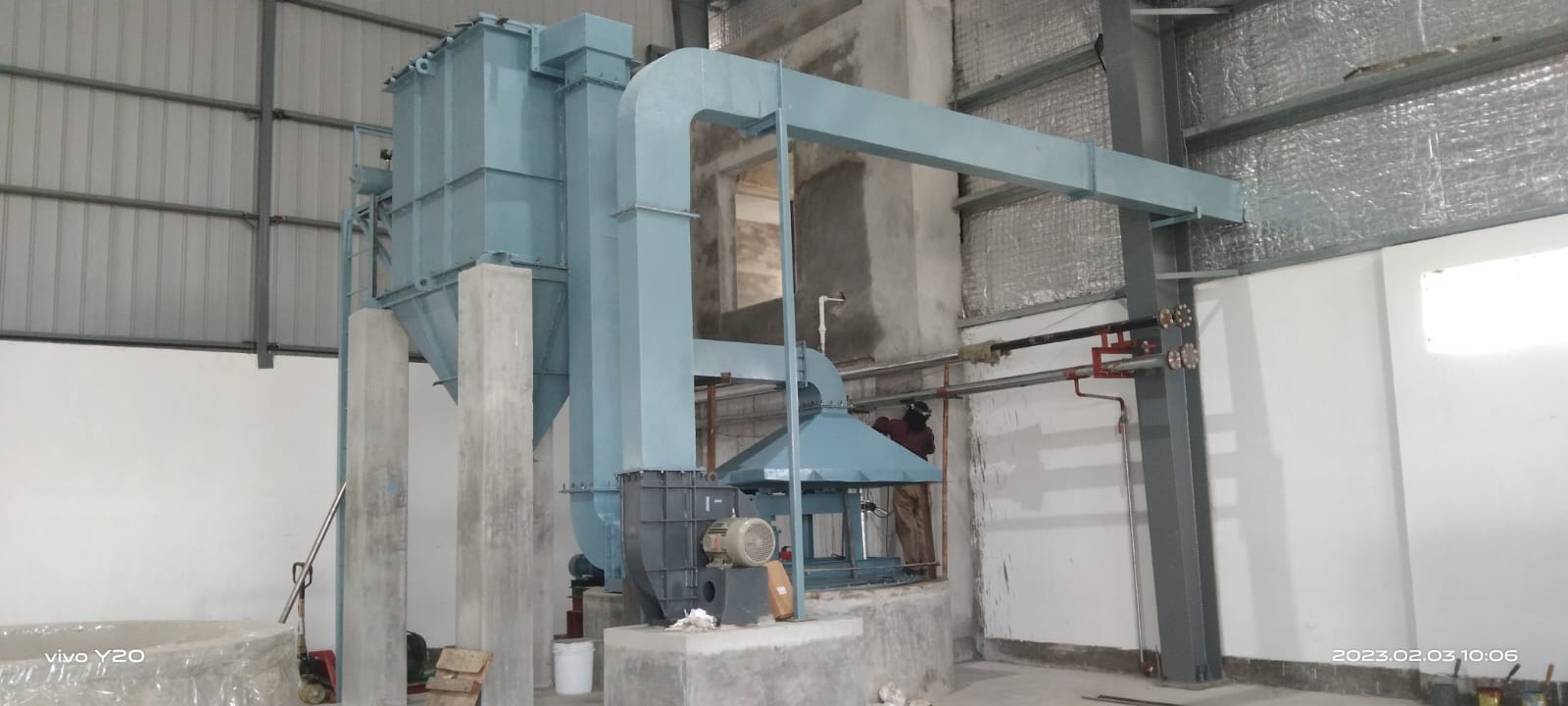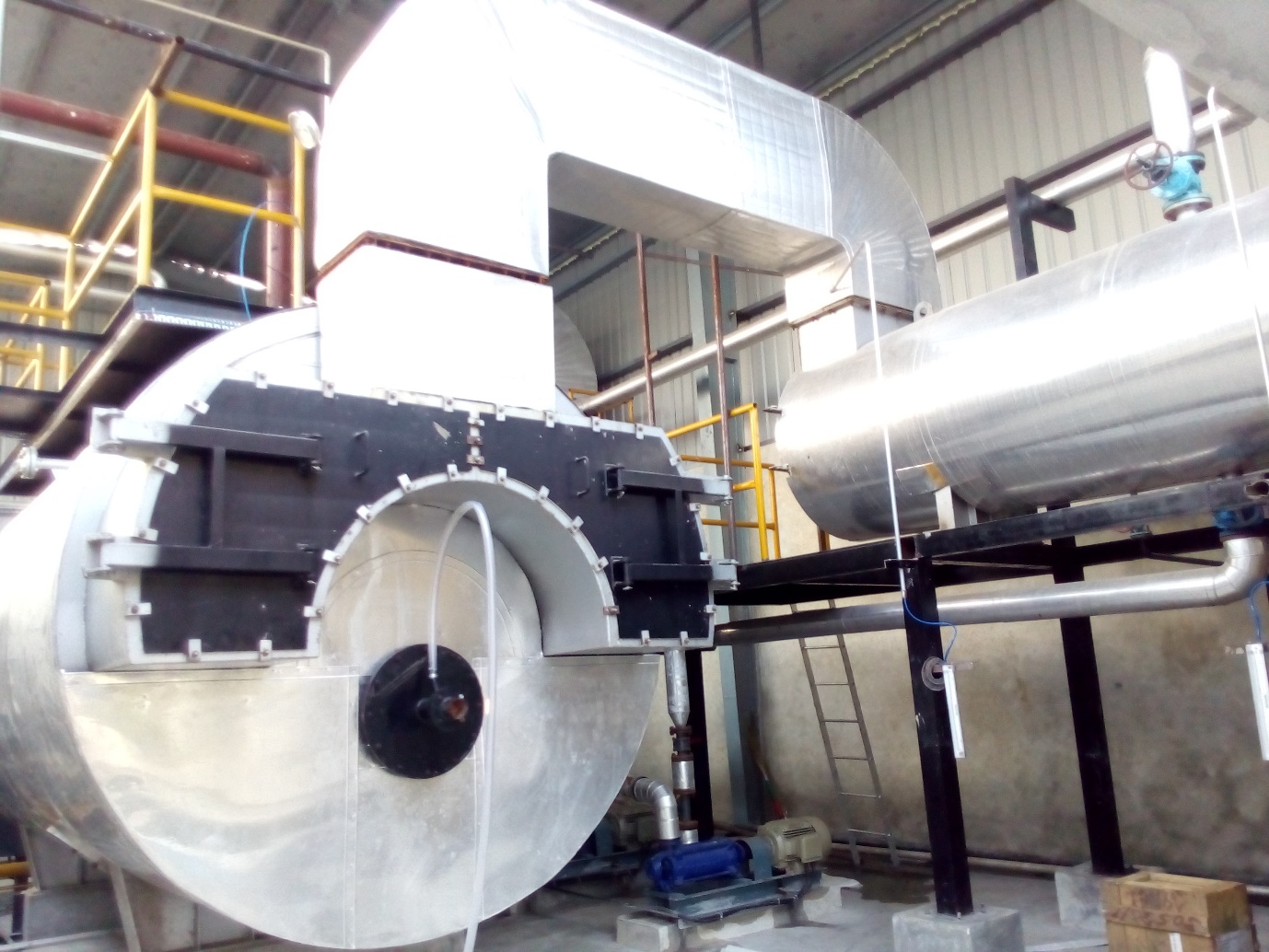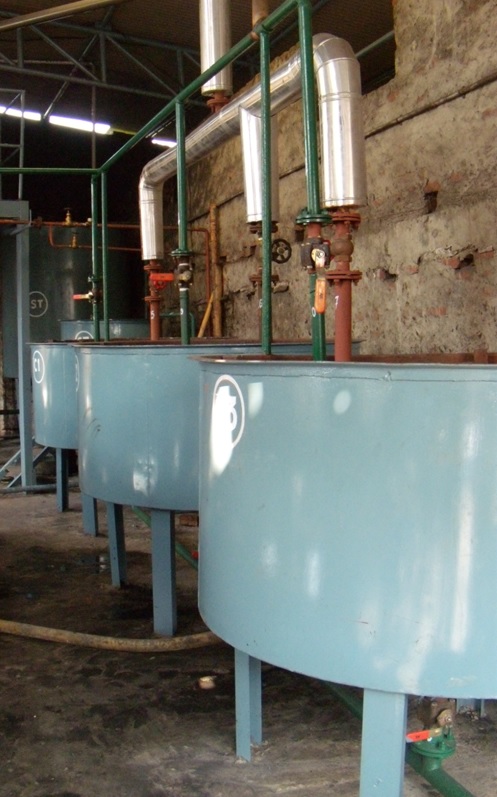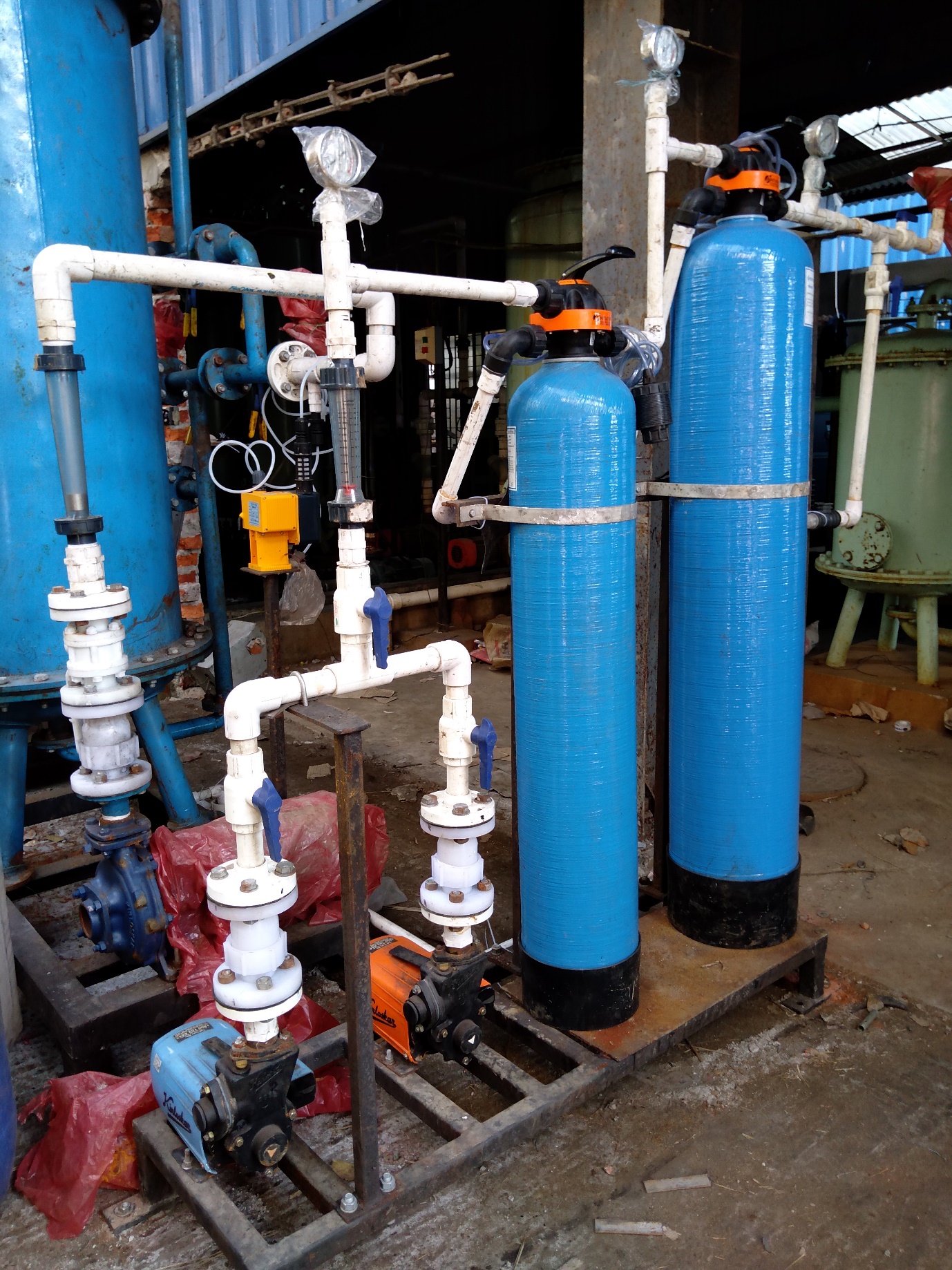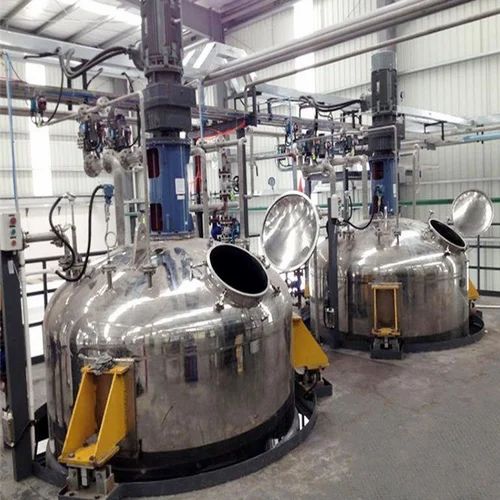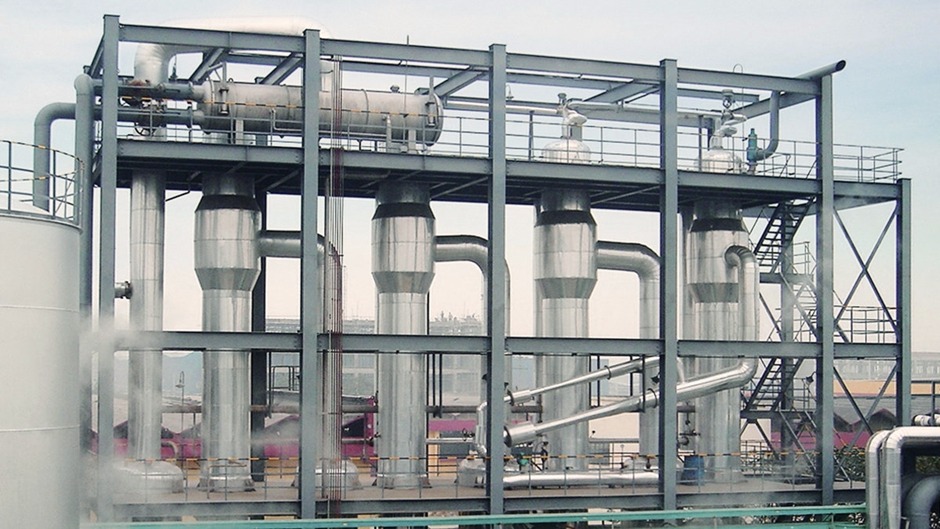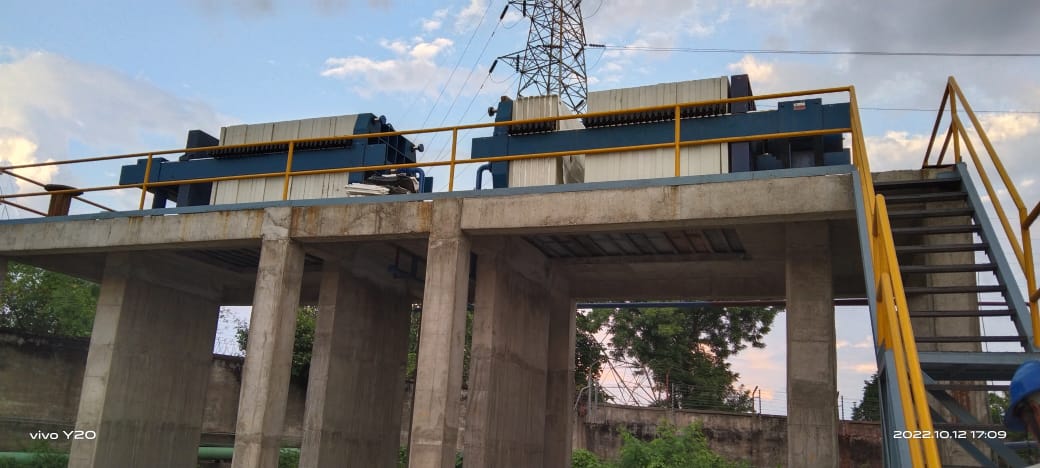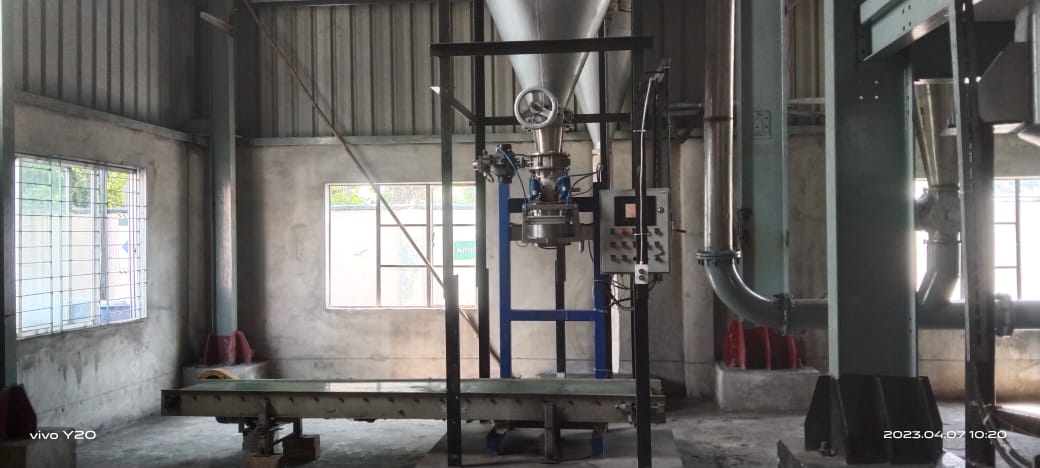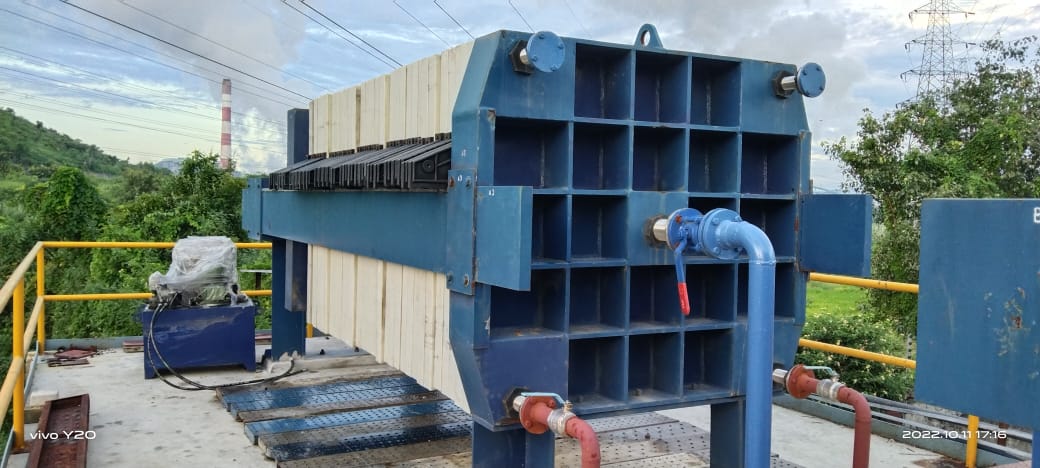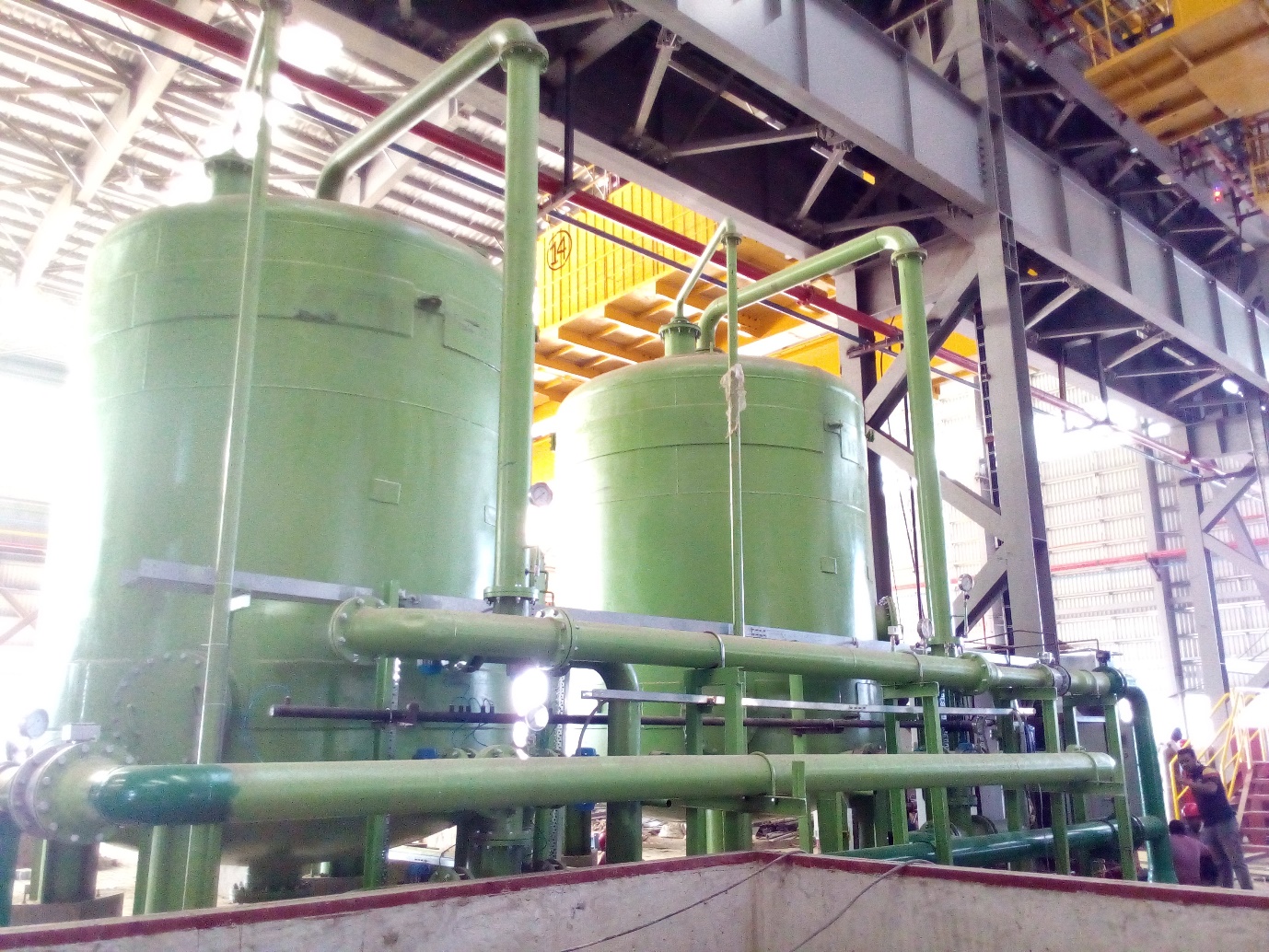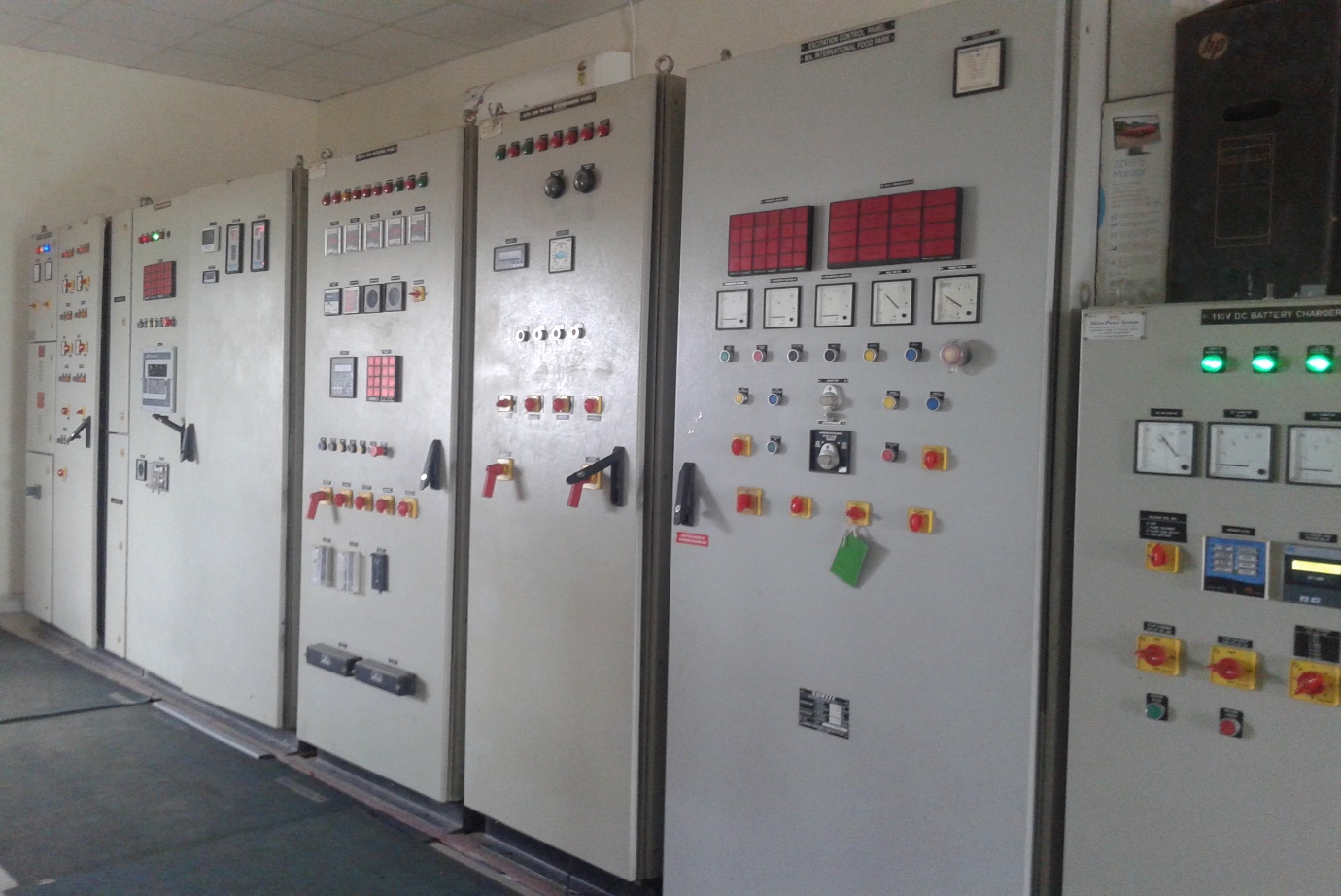Liquid Sodium Silicate Plant From RHA
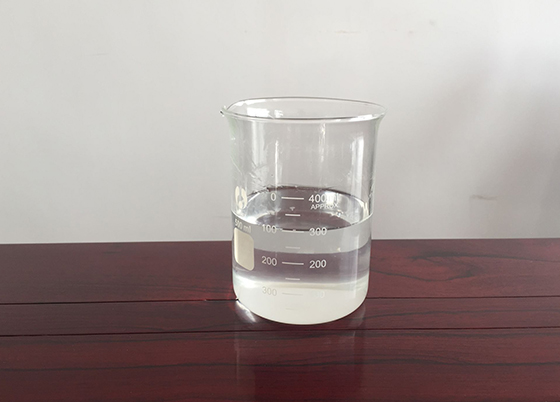
Rice husk Ash (RHA) is a unique waste material which can be utilized to obtain valuable chemicals. This waste generated out of burning husk in Boilers, create huge pollution problem when dumped in open land or in water. Chemicals can be made by using such waste.
The technology of converting RHA to sodium silicate is a novel process developed by us where in the process is a semicontinuous and operated on closed loop process. There is no liquid, gaseous pollution. The cake obtained after filtration is taken care of by removing the retained product and pure Activated Carbon, with slightly low activation can be obtained and sold as by-product for rice bran oil filtration and allied industries.
We have two standard production line
- 10 MT per day
- 15 MT per day
Plant capacity can be decided based on availability of Rice husk ash & multiplication & combination of above lines.
RHA is first made solution with water. This is transferred to the Digester where, caustic soda/ alkali is also charged for reaction under required temperature and pressure. The reactant solution is cooled and filtered.
The residue is taken to a separate tank for further recovery and the filtrate is subsequently taken to another reactor for further reaction under temperature after further chemical treatment.
This is now concentrated to desired final specific gravity and transferred to storage tank for curing and dispatch in tankers or drums.
The residue is subjected to chemical treatment, filtered and may be kept for natural drying or special dryers, if required, pulverized , packed and sold.
Major application of sodium silicate
- Soap, detergents, bar soap and cleaning compounds.
- Ceramics & binders.
- Adhesives & cements.
- Pulp and paper bleaching sizing, de-inking.
- Paper coating, paper tube winding.
- Textile bleaching, processing.
- Buffering agent.
- Concrete grouting.
- Soil solidification.
- Water treatment.
- Leather polishing.
- Welding electrodes.
- Paints & coatings.
- Mining & mineral processing.
- Chimney, furnace, refractory.
- Construction chemicals, damp- proofing.
Precipitated Silica Plant From RHA
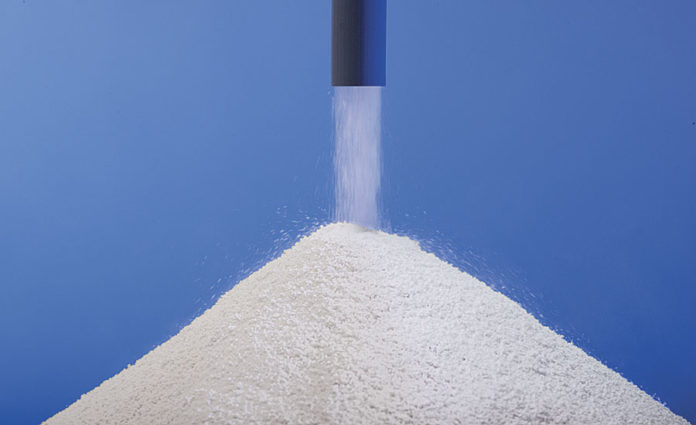
Globally, around 150 million tires are produced annually to cater to the rising demand of the automotive industry. Carbon Black and Precipitated Silica are the two main ingredients which are added as reinforcing fillers and strongly improve tire tread wear resistance and enhance adhesion. Earlier, carbon black was used in conjunction with precipitated silica as filler in tires. However, the trend is shifting toward the complete replacement of carbon black with Green precipitated silica, the more eco-friendly substitute.
Several greenhouse gases which are the major contributors to global warming are released when overcoming the rolling resistance of the carbon black reinforced tires. The growing need to mitigate environmental problems has led to the implementation of several rules and policies making the regulatory environment more stringent. These include mandatory CO2 emissions reduction, tire labeling and growth of the green tires market, essentially reducing the carbon footprint. A key component of Green Tires is precipitated silica making it the necessary ingredient of energy efficient tires and the answer to a safe and non-polluted environment.
As global demand for low rolling-resistance tires continues to grow, silica firms are responding in kind with capacity expansions.
WHY GREEN SILICA?
Advantages of Husk Green Technology Process:
| Green Technology Process | Conventional Process |
| Biomass based and carbon free technology | Silica sand based process which produces air and water pollution |
| By-products are developed during the process | No by-products from the conventional manufacturing. |
| One of them gets recycled, and The other one generates additional revenue.ROI on account of above is very much high.No Air / Liquid Pollution | Lower ROI.Considerable Air / Liquid Pollution |
| Low Power Consumption in view of considerably lower operating temperature | High Power Consumption compared to the Green Process |
| Considerable Water Saving due to recycling of the water being reused. | No Water Saving |
| Bio-Silica Certification Applicable | Not Applicable |
Much of that growth is linked directly to rubber applications, tires and footwear as the leading factors that are creating a silica boom.
Low rolling-resistance or “green” tires, are made of rubber, carbon black and GREEN silica, and silica consumption in green tires is double the amount in standard tires.
The combined use of precipitated silica and silane can reduce tire rolling resistance significantly and save as much as 8 percent on fuel consumption. As a result, the global share of low rolling-resistance tires was projected to increase from 15 percent in 2011 to 34 percent in 2016, and up to 45 percent by 2018.
As green tire production grows, the volume of GREEN precipitated silica used in these tires is surging by an estimated 20 percent annually from 2013-18, compared with just more than 5 percent growth of precipitated silica use in all other applications for the same period.
Other applications for precipitated silica include agricultural products, elastomers, food and health care, automotive batteries and antifoams.
Demand for precipitated silica has caused several silica manufacturers to boost global precipitated silica capacity.
While much attention is being paid to precipitated silica and green tires, pyrogenic or fumed silica market is now stagnant.
Our technology is to produce highly dispersible silica and precipitated silica from rice husk ash based on zero waste chemical process using rice husk ash as feed and produces precipitated silica and other by-products. The technology can extract upto 70% silica from the ash. The technology has already been commercialized. The technology can produce silica for all major applications, including tires, rubber, footwear, paints, coatings, toothpaste, food & pharmaceuticals.
Rice husk ash is a leftover generated after using rice husk as fuel in industrial boiler and power plants. Every year more than 20 million tons of rice husk ash is generated globally which is landfilled or dumped in open grounds, affecting the environment negatively. Our technology will use the ash and extract the advanced grades of precipitated silica, including highly dispersible silica from it.
Highly dispersible silica is an advanced grade of precipitated silica which is used in energy efficient green tires to improve the performance of tires. It reduces the rolling resistance of tires while improving the grip. It results in improving the mileage of vehicles while reducing the greenhouse gas emissions from the vehicles.
The technology has various advantages over conventional precipitated silica production technologies. The conventional technology uses sand as a base material for silica whereas our process uses rice husk ash as a base material for silica. The technology can produce better quality silica as compared to existing conventional methods.
The Process entails:
- Production of Sodium Silicate from rice Husk Ash by reacting the ash with
NaOH. - The correct grade and concentration of the Sodium Silicate is critical for the subsequent stages.
- The Sodium Silicate produced is then treated with acid to produce Precipitated Silica – critical process parameter control is mandatory to achieve the desired grade of Silica.
- Ash will always contain some unburnt carbon.
- This carbon can be converted to Activated carbon as bi product
USES/APPLICATION :
Tires
Silica has become key filler for the tire industry due to its advanced properties. Silica is perceived by the tire industry as a material which can address the environmental challenges associated with the tire production and can replace carbon black in the tires. Our silica is more environment-friendly material as it requires lesser energy as compared to the conventional silica production methods, and uses a waste as base material for silica. Our technology produces high-quality Rice husk ash based green silica for energy efficient green tires.
Precipitated silica is used in tires due to its fine particle size and, higher dispersibility makes it better reinforcing filler in tires. Good dispersion allows a greater filler contact area and a better homogeneity of the filler distribution within the compound. It also improves abrasive resistance and toughness of the tires due to its abrasive nature and tensile strength. Highly dispersible silica improves the rolling resistance of the tires while improving the wet grip and fuel economy of a vehicle. It results in improving the mileage of the vehicle, reducing the greenhouse gas emissions from the vehicles. The improvement in wet grip & wet traction increases the safety of the vehicles in icy, slippery or wet conditions. Addition of this has the following advantages for tires:
- Improve wet traction, rolling resistances, and fuel efficiency.
- Improves wearing resistance and tensile Strength of tire treads
- Better road handling and winter performance.
- Better abrasion resistance.
- Better dynamic properties.
- Good abrasion.
- Improves overall tire performance.
Industrial Rubber
Green precipitated silica is used as a reinforcing agent in natural and synthetic rubber and products made from rubbers. This silica has application conveyor belts, gasket & seals, rice rollers and similar applications. The silica particles form physical bonds with the rubber molecule chain to strengthen the vulcanized compound.
Green silica is added in the rubber products to –
- Improves abrasion resistance and toughness.
- Improves tear resistance and tensile strength and reinforcing strength.
- It provides longevity and durability.
- Enhanced resistance to heat build-up.
- Improved color retention and/or translucence.
Footwear
Green precipitated silica for footwear application. Green silica enhances various properties in footwear such as abrasion resistance, durability and stiffness. Due to fine particle size, it will easily disperse in the matrix improving it modulus and resilience resulting in better flexibility & comfort.
The major advantages of using silica in footwear are:
-
- It provides longer life and durability.
- Improves abrasion resistance, tear resistance and stiffness.
- Better color effect for colored and semi-transparent soles.
Food Products
Green precipitated silica used in all type of powder like food products such as salts, sugar, spices, soup powders, milk powders to prevent the caking and induce the flow properties in the product. Green precipitated silica products are odourless, colourless, inert and highly absorptive materials. Due to its fine particle size distribution and smaller particle size, it used as the flow-inducing agent. Adding green silica in the food products improves the food product quality by Imparting uniformity to irregularly shaped particles and inducing flowability. Reduction in ambient moisture content by absorbing free moisture
Prevents caking and agglomeration of the particles.
Toothpaste/Oral care
Precipitated silica used as an abrasive agent in toothpaste due to its abrasive nature. Low level of abrasion is sufficient for the efficient cleaning/polishing of the teeth. Abrasion is related to the morphology of the material. It also acts as a thickening agent in the toothpaste and it also inert in nature. Addition of silica in the dental products has benefits such as:
-
-
- Better cleaning of the teeth while with very less dosage of silica in the product.
- Improved color retention.
-
Paints, Coatings & Inks
Precipitated silica has been used by Paints, Coating and Ink industry due to performance-related related advantages caused by silica. Smaller particle size of silica results in higher flow ability which improves paints, coating & inks’ anti settling properties. Its oil absorption properties prevent products spreading ability. Silica acts as a flattening agent that reduces the gloss of paints, varnishes, lacquers and other finishes. It also a works as thickening agent that is a rheology modifiers and anti-sag/suspension agent for a broad range of plastisols, inks, adhesives, caulks, and sealants. Key reasons of using silica in pains, coatings and inks are –
-
-
- Prevents spreading
- Induces anti settling behavior.
- Improves dispersion
- lowers viscosity and improves stir-in capability
-
Plastics
Green precipitated silica is used as a thickening, thixotropic and suspending agents in liquid systems, paste emulsion and plastics etc. It Improves flow characteristics of powder and insulating properties to PVC compounds for high voltage cables. It also acts as an anti blocking agent for cellulose hydrate and plastic films. Advantages:
-
-
- Improves extraction properties and better surface finish.
- Prevents surface sticking of Plastic Films
- Easy process ability
- Better gloss and appearance.
-
MARKET
The global precipitated silica market size was estimated at USD 1.72 billion in
2016. It has high demand for manufacturing rubber and non-rubber products such as toothpastes, and pesticides. Increasing product penetration as a reinforcing agent and filler to replace carbon black in tire manufacturing industry is expected drive demand.
Commercially, there is a wide range of precipitated silica grades available for the end-use applications. The prices for these grades slightly vary based on the purity level offered by the industry players. For instance, highly dispersible grades of the product are the most expensive and cost over 15% to 20% more than easily dispersible grades.
The demand in the U.S. is primarily driven by the rubber application. Growing demand for the product in manufacturing of green tires for motorcycle and automotive applications is expected to have a positive impact on the market. The region is one of the largest producers of heavy commercial vehicles, thus resulting into high demand.
Green tires have become the standard first mount for passenger cars in Europe, and that application’s annual consumption of precipitated silica has climbed from zero in 1992 to 100,000 tons today. The European market for precipitated silica is growing at a 10 percent annual clip, versus only 4 percent for the world as a whole.
Inexpensive gasoline has held the green tire back in the US, but consumers may adopt it because it performs better on wet surfaces. A more receptive domestic market may be the US trucking industry, for which gas mileage is key,
